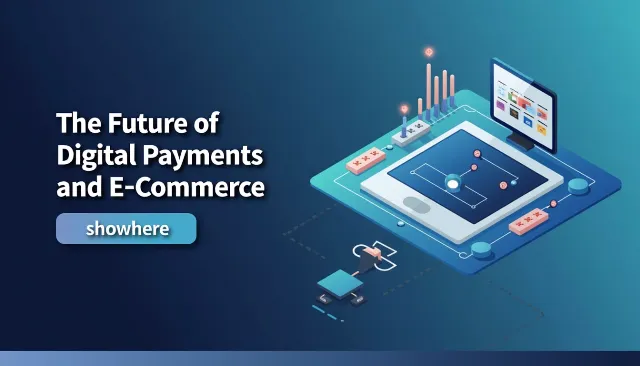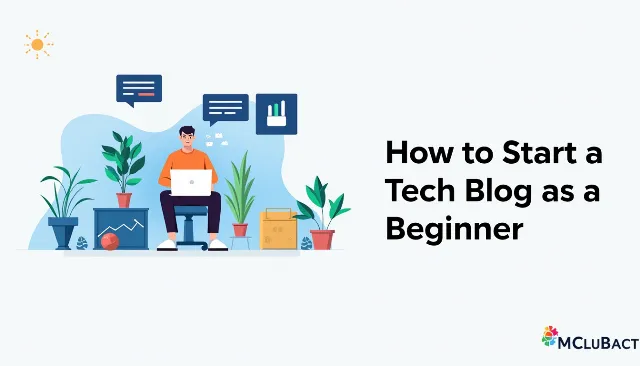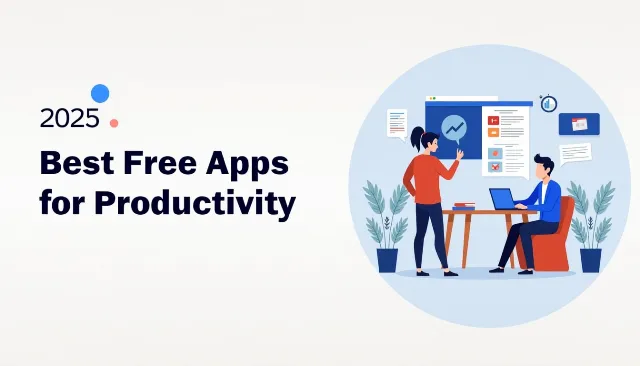1. Introduction: A Cashless World on the Rise
In recent years, paying with cash has started to shrink while digital ways of paying are growing fast. All around the world, people are using their phones, computers or cards to buy things instead of carrying lots of coins or bills. For example, globally the digital payments market is expected to hit roughly US$13.9 trillion in 2025, up from around US$9.5 trillion in 2023.
This change is happening because smartphones are everywhere, internet access is easier, and more stores are ready to accept digital payments. In the Asia-Pacific region alone, by 2027 digital wallets are expected to make up about 66% of in-store payments (point-of-sale) in that region.
So, we are moving toward a world where you might rarely use cash. Instead, you click or tap to pay. This doesn’t mean cash will disappear instantly everywhere — in many places people still use it — but the trend shows digital payments becoming the normal way. The rest of this article will explore how e-commerce and payments are evolving together.

2. How Digital Payments Are Transforming Shopping Habits
When people shop online or in physical stores, how they pay is changing. More folks are choosing to pay with digital wallets, apps or cards instead of handing over cash. In the U.S., for example, nearly 70% of online-adults used digital payments in the last three months.
On the e-commerce side, when shopping happens online, it is super convenient to pay digitally — no need to go to a bank or wait for a cheque. And as digital payment methods get faster and easier, people might buy more often or try new kinds of products. For instance, in India, the instant payments system Unified Payments Interface (UPI) is being used to shop in small stores, pay friends, and even for subscriptions.
This shift means merchants and businesses must keep up: they need to accept digital payments, make checkout simple and secure. It also pushes them to think about how people buy: via mobile apps, social media links or in-store QR codes. So the shopping experience is becoming more seamless thanks to digital payments.
3. E-commerce and the New Digital Economy
E-commerce — buying and selling online — has grown a lot, and digital payments are a key part of this growth. Because payment methods are easier and faster, more people feel comfortable shopping online. A big reason is that when you pay online, you don’t need to carry cash or go to a store; you can shop anytime from your phone or tablet.
Also, e-commerce allows small businesses and even individual sellers to reach customers far away. Digital payments make that possible because they let money move across states or countries quickly. Reports show that by 2028, non-cash transactions may cross USD 3 trillion globally.
In this new digital economy, products and services are just one click away. Businesses are blending shopping, payment and delivery into one experience. For kids, it might mean ordering a toy or game online and tapping a phone to pay — all with a few simple steps. And for businesses, it means designing their website or app so payment is easy, safe, and trusted.
4. The Role of Mobile Wallets in Future Transactions
Mobile wallets are apps or services on your phone that let you store your payment details and pay with a tap or scan. They are getting more popular because they are fast, easy, and you can carry them virtually instead of a wallet full of cards or cash.In the Asia-Pacific region, mobile wallets are predicted to lead payments by 2027.
Also, mobile wallets are being used for more than just paying at stores.
They help in peer-to-peer payments (paying friends), paying bills, subscriptions, and sometimes even for lending or planning money. Businesses are embedding wallet functions into their apps so payment becomes part of the experience, not a separate step.
For future transactions, mobile wallets will matter a lot, especially as phones become smarter and connectivity grows. They will be safer too, using features like fingerprint or face ID (biometrics) instead of typing long passwords. This makes paying smoother for kids and adults alike, and the whole digital payments world becomes more friendly and accessible.
5. Contactless Payments: Fast, Safe, and Convenient
Contactless payments have become one of the most loved ways to pay in recent years. With just a tap of your card, phone, or smartwatch, you can make a payment in seconds. This method became especially popular after the COVID-19 pandemic because people wanted safer, no-touch ways to pay. Reports say that by 2025, over 80% of in-store payments in many countries will be contactless.
The best part of contactless payment is its speed and safety. You don’t have to hand your card to anyone or touch payment machines. Just bring your phone close, and the payment is done instantly. It also reduces long lines at stores and keeps shopping quick and easy. Kids may have seen their parents using Google Pay, Apple Pay, or a tap card — that’s contactless payment in action!
In the future, contactless payment will work everywhere — from big malls to local stores and even school canteens. As more banks and apps add this feature, paying for things will become as simple as waving your hand. This shows how digital payments are making everyday life smoother and safer for everyone.
6. The Rise of Buy Now, Pay Later (BNPL) Models
“Buy Now, Pay Later” (BNPL) is changing how people shop online. It lets buyers take home products right away and pay for them later in small, easy parts. Popular companies like Klarna, Afterpay, and Affirm have helped millions of people use this flexible payment style. In 2025, BNPL spending is expected to cross US$600 billion globally, showing how much shoppers love this feature.
The reason BNPL is so popular is that it helps people manage their money better. Instead of paying the full price at once, they can divide it into small payments over time. For example, if someone buys a laptop or clothes online, they can pay in four small amounts instead of one big bill. This makes online shopping easier and more affordable.
In the future, more e-commerce websites will offer BNPL options for customers. It will be linked directly with digital wallets and even local banks. However, it’s also important for users to spend carefully and understand payment terms. BNPL is a helpful tool, but smart spending will make it even better for the digital generation.
7. Blockchain and Cryptocurrency in E-commerce
Blockchain is a new kind of technology that keeps records safe and transparent. It’s like a digital notebook that everyone can see but no one can secretly change. This technology is now being used in payments, especially through cryptocurrencies like Bitcoin and Ethereum. Experts believe blockchain will make online payments faster and safer by removing middlemen like banks.
In e-commerce, blockchain can help track products, confirm real sellers, and make cross-border payments smoother. For example, if you buy something from another country, blockchain can show every step — from the factory to your doorstep. This builds trust between sellers and buyers, especially for high-value goods.
Cryptocurrency payments are still new, but they are growing quickly. Big brands like Tesla and Shopify have already started accepting crypto payments in some areas. In the coming years, blockchain will likely become part of regular online shopping, making the digital world more transparent and fair for everyone.
8. AI and Machine Learning Enhancing Payment Security
Artificial Intelligence (AI) and Machine Learning (ML) are like smart helpers that learn from data and predict what might happen next. In the world of digital payments, these tools are becoming very important to stop fraud and protect users. For example, AI can detect unusual activities — like if someone tries to log into your account from another country — and block it right away.
Online stores and banks are using AI to make payments safer and faster. Machine learning systems can study thousands of transactions in seconds and find which ones might be fake. In 2025, experts expect over 70% of online payment systems to use AI-powered fraud detection. That means fewer stolen cards and safer shopping for everyone.
In the future, AI will also help users manage their money better. It can give reminders for bills, suggest ways to save, and even warn about scams. So, AI is not just protecting payments — it’s helping people shop smarter and stay safe in the growing world of e-commerce.
9. The Power of Digital Banking in Online Trade
Digital banking is changing the way people manage money and shop online. Unlike traditional banks, digital banks let you open accounts, transfer money, and pay bills directly from your phone or computer. In 2025, the number of people using digital banking is expected to cross 3.5 billion globally, showing how popular and convenient it has become.
For online shopping, digital banking makes payments fast and easy. Customers can connect their bank accounts to e-commerce apps or wallets and pay instantly without carrying cash. Businesses also benefit because payments arrive quickly, helping them manage inventory and deliver products faster. In countries like Nepal and India, mobile banking apps have made it easier for people in small towns to shop online safely.
Digital banking also provides extra features like expense tracking, savings tips, and loan management. In the future, these services will be more integrated with e-commerce platforms, allowing seamless shopping, payment, and budgeting in one place. This makes managing money simple, safe, and accessible for everyone, including young adults and first-time online shoppers.
10. How 5G Will Revolutionize Online Shopping
5G is the latest generation of mobile internet, and it is super fast. With 5G, downloads, streaming, and online shopping happen almost instantly. This means people can browse e-commerce websites, watch product videos, and complete payments in seconds without delays. By 2025, 5G networks are expected to cover over 60% of the world’s population, making shopping faster everywhere.
For e-commerce, 5G allows richer experiences. Online stores can show 3D product images, virtual try-ons, and live videos without lag. This gives customers a better idea of the products before buying. Faster internet also supports real-time payments and instant order confirmations, which makes shopping smoother and safer.
In the future, 5G could support more advanced technologies like augmented reality (AR) shopping or AI assistants that help customers pick products. With these improvements, online shopping will feel more interactive, fun, and easy — almost like visiting a physical store but from your phone or tablet.
11. Cross-Border Payments and Global E-commerce Growth
Cross-border payments are how money moves between people or businesses in different countries. Digital payments are making these transactions faster, cheaper, and more secure. In 2025, global cross-border e-commerce is expected to reach over US$1 trillion, showing the huge demand for international shopping.
With easier international payments, people can buy products from other countries without worrying about currency conversions or bank delays. Services like PayPal, Wise, and digital wallets make this process simple. Even small businesses can sell products worldwide and receive payments instantly, helping them grow faster.
The future of global e-commerce depends on seamless cross-border payments. With innovations like blockchain, real-time currency conversion, and AI fraud detection, international shopping will be safer and more accessible for everyone. This means kids and families can order toys, clothes, or gadgets from anywhere in the world with confidence.
12. Voice-Activated Payments: The Next Big Step
Voice-activated payments allow people to pay using just their voice. Devices like smart speakers or smartphones listen to your instructions and complete transactions instantly. This technology is growing fast because it is convenient, hands-free, and helpful for people with busy lifestyles. By 2025, voice payments are expected to reach over US$40 billion globally.
For shopping, this means you could say, “Buy this book,” and your device will confirm payment, check your account, and place the order. No typing, swiping, or entering card numbers is needed. It’s simple, fast, and safe because voice recognition can confirm your identity before completing the payment.
In the future, voice payments may become common in homes, cars, and public spaces. Combined with AI assistants, they could remind you to pay bills, suggest products, and even reorder items automatically. This shows how digital payments are evolving to be smarter, easier, and more convenient for everyone.
13. Augmented Reality (AR) Shopping and Instant Payments
Augmented Reality (AR) is a technology that lets you see digital objects in the real world using your phone or tablet. In e-commerce, AR helps customers “try” products before buying. For example, you can see how a chair fits in your room or how a pair of shoes looks on your feet. This makes shopping more interactive and fun.
Instant payments make AR shopping even better. When you see a product you like, you can pay immediately using digital wallets, credit cards, or mobile banking. This combination of AR and instant payments reduces the steps between liking a product and receiving it at your home. Big brands like IKEA and Amazon already use AR tools to improve online shopping experiences.
In the future, more stores will use AR with digital payments to create immersive shopping experiences. Kids and adults alike could explore virtual stores, try products in real-time, and pay safely with a tap. This technology shows how digital payments and e-commerce are merging to make shopping faster, smarter, and more enjoyable.
14. Cybersecurity Challenges in Digital Transactions
As digital payments grow, so do cybersecurity risks. Hackers and fraudsters try to steal money, personal details, or credit card information. Reports show that online fraud costs over US$30 billion annually worldwide. This makes protecting digital transactions very important for both buyers and sellers.
Banks, e-commerce platforms, and payment apps use advanced tools like AI, encryption, and multi-factor authentication to keep payments safe. Users also play a role by creating strong passwords, using secure networks, and checking transaction alerts. Learning simple safety habits can prevent most cyber threats.
In the future, digital payments will continue to improve security. Technologies like blockchain, AI fraud detection, and biometrics will make online shopping safer. While risks exist, careful use of digital tools ensures that people can shop confidently, knowing their money and data are protected.
15. Government Regulations and Digital Payment Policies
Governments around the world are creating rules to make digital payments safe and fair. Regulations help protect consumers, prevent fraud, and encourage more people to adopt online payment methods. For example, India’s Reserve Bank and Nepal’s Central Bank have issued guidelines for mobile wallets and e-commerce platforms.
Policies also include rules for data privacy, cross-border payments, and secure transactions. These rules make sure businesses follow standards and users are protected from fraud or misuse of personal information. Governments also support initiatives to increase digital literacy and access to payment technologies in rural areas.
In the future, stronger regulations will build trust in digital payments. Shoppers will feel safer buying online, and businesses can grow knowing that rules are clear. This balance between innovation and safety will help e-commerce and digital payments continue to thrive worldwide.
16. Sustainable and Eco-Friendly E-commerce Practices
E-commerce and digital payments are also helping the environment. Paper bills, cash handling, and physical stores use energy and resources. By paying digitally and shopping online, people reduce paper usage and carbon footprints from multiple trips to stores. Some companies even use eco-friendly packaging and delivery options to further protect the planet.
Digital wallets and online payments reduce the need for cash transportation and bank operations, which lowers energy use. Many e-commerce platforms encourage eco-conscious choices, like selecting slower shipping to save fuel or supporting green products. Customers can also track their eco-impact through apps.
In the future, sustainability will be a bigger focus. Combining digital payments, smart delivery, and eco-friendly practices makes shopping better for both people and the planet. Kids learning about these practices today will grow up in a world where technology and environmental care go hand-in-hand.
17. Rural and Developing Markets Embracing Digital Payments
Digital payments are no longer just for big cities. People in rural areas and developing countries are also using mobile wallets, digital banking, and online payments. In Nepal, India, and other countries, even small shops now accept QR code payments, making shopping easier and safer.
For residents in villages, digital payments save time and reduce the need to travel long distances to banks. Farmers, small business owners, and students can pay for products, school fees, or groceries online. Governments and fintech companies are providing training and apps to help people understand digital payments.
In the future, these markets will continue to grow. More people will have smartphones, better internet, and access to banking services. This creates opportunities for e-commerce to expand, allowing rural families to shop online, receive deliveries, and participate in the global digital economy.
18. The Future of Subscription-Based E-commerce Models
Subscription-based e-commerce is becoming very popular. Customers pay a small amount regularly to get products or services automatically. Examples include monthly snack boxes, streaming services, or online learning platforms. Digital payments make subscriptions easy because money is deducted automatically from wallets, cards, or bank accounts.
This model benefits both customers and businesses. Customers don’t have to remember to reorder, and businesses get predictable income. For example, platforms like Netflix, Amazon Prime, and Spotify use subscription models to serve millions of users worldwide. The trend is expected to grow as digital payments become faster and more secure.
In the future, more types of subscriptions will appear, including groceries, school supplies, and health products. Kids, teens, and families will enjoy convenient, hassle-free services with safe, automated digital payments. This makes online shopping simpler and more efficient.
19. Customer Trust and Data Privacy in Online Payments
Trust is key for digital payments and e-commerce. People need to know their money and personal information are safe when shopping online. Companies and banks use encryption, biometrics, and AI to protect customer data and prevent fraud. Strong privacy rules also ensure that personal information is not misused.
When customers trust a platform, they are more likely to shop frequently. E-commerce platforms focus on transparency, showing clear pricing, delivery tracking, and secure payment options. Governments also regulate data protection laws to increase consumer confidence.
In the future, digital payments will rely heavily on trust. Safe transactions, transparent systems, and privacy protection will make online shopping enjoyable and reliable for everyone. Kids learning about secure payments today will grow up using e-commerce safely.
20. Conclusion: A Seamless, Smart, and Secure Digital Future
The future of digital payments and e-commerce is bright and exciting. Payments are becoming faster, safer, and easier through mobile wallets, AI, blockchain, and 5G technology. Shopping online is more convenient than ever, whether for everyday items or international products.
Technology is also helping people save time, protect money, and make eco-friendly choices. Rural areas are joining the digital economy, subscriptions are growing, and innovative payment methods like voice or AR shopping are changing how people interact with stores.
Overall, the future points to a world where shopping and payments are seamless, smart, and secure. Everyone, from kids to adults, will enjoy faster, safer, and more fun ways to buy and pay. Digital payments and e-commerce are not just trends — they are shaping the way we live, shop, and connect globally.






